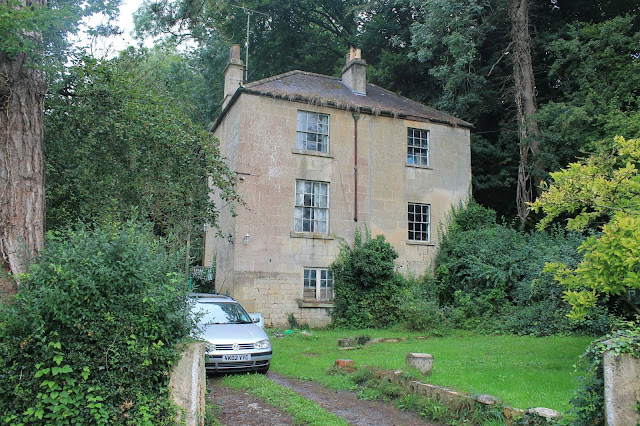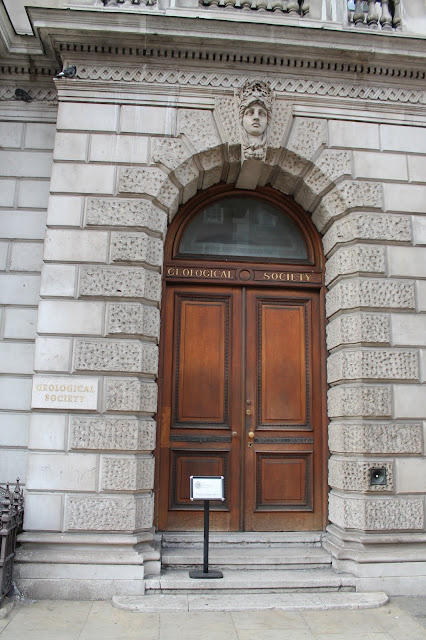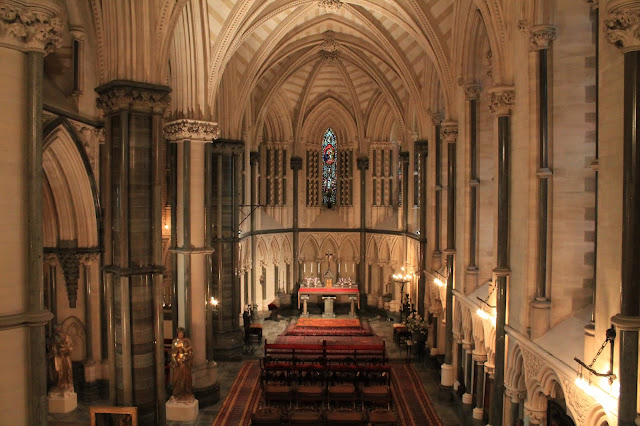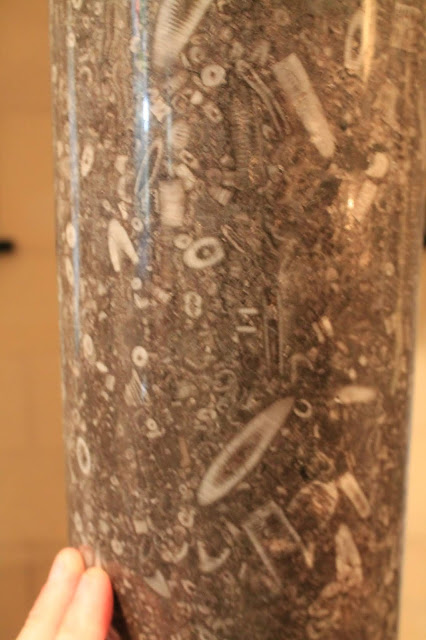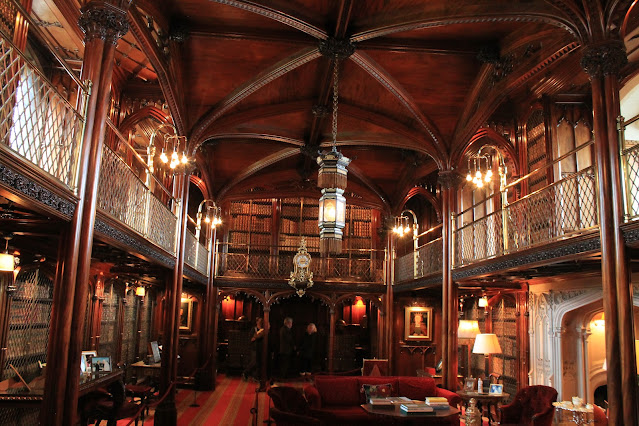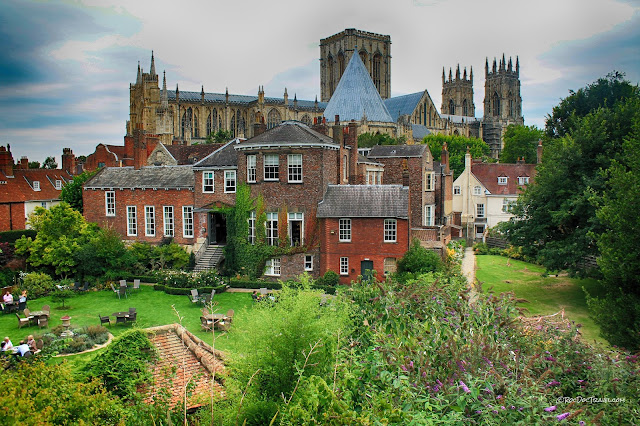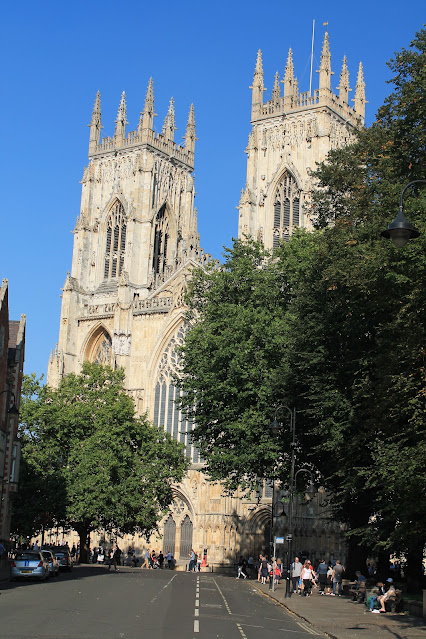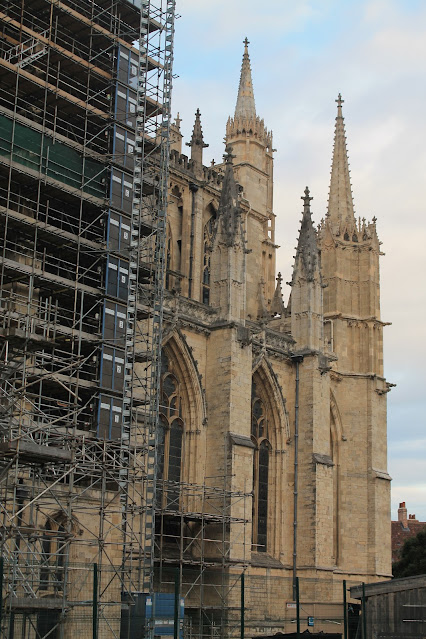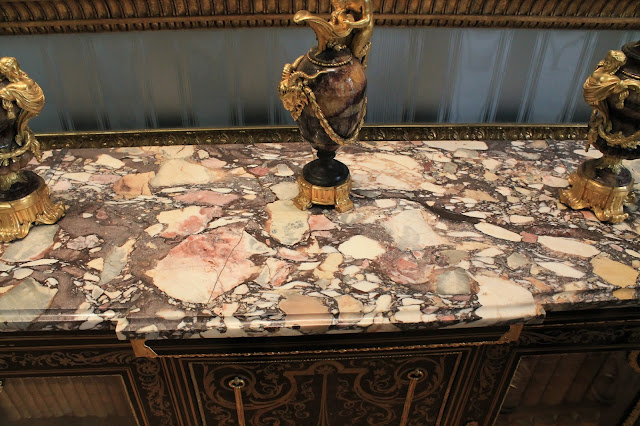Great Britain: In the Footsteps of Revolutionary Science
Some Sites in Great Britain:
In the Footsteps of Revolutionary Science
Get the geologic story behind some of Great Britain's most famous and significant sites, including William Smith's revolutionary 1815 geologic "map that changed the world."
William Smith and His Geologic Map
It's hard to overstate the importance of this one man's discoveries, insights, and products. In the early 1800's, William Smith made observations in underground coal mines and canal excavations, and extensive hikes around the country, and connected the dots like no one had done before. He gave us the simple but revolutionary concept that sedimentary strata are continuous over large areas, and occur in a predictable stacking order. Before this, geologic science was stagnating in armchair speculation. By contrast, blue-collar William Smith got out in Nature and studied the actual rocks and applied the scientific method to test hypotheses with real data, not gentlemen's speculations. His geologic map of England, Wales, and part of Scotland published in 1815 set Geology on the fruitful path that led to today's understanding of the Earth, paving the way for discovery of natural resources, deciphering Earth's history, understanding fossils, and eventually Plate Tectonics.
Bath
Jurassic "Bath stone" is a cross-bedded oolitic limestone. That means the grains in the rock are tiny balls of calcium carbonate (the mineral calcite) formed by rolling around in calcium-rich shallow waters. Under magnification, they look like little pearls. This was a favorite building stone in southern England for much of the 1800's, especially in Bath itself.
In the hills south of Bath in Monckton Comb at Tucking Mill is this house long assumed to be where William Smith lived during much of his revolutionary geologic work. It's on a one-lane, two-way lane located here: 51.352110°, -2.338604° , so use caution driving.
This plaque is prominent on the front of the house.
But in his book, Simon Winchester claims that records show William Smith's house was actually this one, east across the stream.
It's a private house with no plaque or marking, so please be considerate. I snapped this picture by quickly popping out from behind the bushes and quickly disappearing. Come to think of it, I must have looked suspicious! But I'm surely not the first or last.
London
These are the doors to the Geological Society located here
51°30'31.0"N 0°08'18.5"W just west of Picadilly Circus on Picadilly. It's next to an MG showroom (if that still exists!). We just entered and talked to the very nice receptionist, explaining that I'm a visiting professor of geology. She immediately said, "You'd like to see William Smith's map, wouldn't you?" And with some enthusiasm, I said yes.
She opened a curtain, and there it was, next to the contemporary Geological Society's map that Winchester claims was plagiarized. This is an original, restored copy that looks absolutely stunning. The colors look new, and the detail is amazing.
There's the offical, long title.
This is a close-up of the Bath area where William's career began and where he made revolutionary insights into geology of the earth.
York
This original map hangs in the Yorkshire Museum in York. It's a bit more faded than the Geological Society's copy, which allows you to better appreciate its antiquity. To see this one, contact one of the staff. It's upstairs next to an entire display room dedicated to William Smith. The staff will lift the blind for you. I'm so glad institutions like this take the necessary efforts to preserve landmark documents like this!
Arundel
Okay, taking a break from William Smith, here are some other fascinating sites in the U.K. and some about their geologic ties. We'll return to William later.
I highly recommend a visit to Arundel Castle! In continuous use for centuries, this is no cold, stony castle like so many. It is one of the most beautiful structures I've ever been in!
I was mesmerized by this beautiful chapel and its brilliant use of rock types. A golden limestone forms most of the structure, but several large pillars are a darker gray, fossil-rich limestone like the one below. Granite was used in several places as well.
Look at the fossils in this polished marble column!
Dover
Just a quick look at Dover, with its majestic castle overlooking the busy harbor. Built beginning in the 1100's, it is also made of a golden limestone, here called "Caen stone," which was brought from France by the Normans. Other structures made of golden Caen limestone include Westminster Abbey, Canterbury Cathedral, and the Tower of London.
Chatsworth House
Another of the most beautiful structures in the U.K. is popular Chatsworth House. It's located here 53.22772713919964, -1.6110845376547054 in Devon, west of Chesterfield. Made mostly of local banded, golden sandstone, it has appeared in several films including one of my favorites, "Pride and Prejudice" in 2005.
The Cavendish family has a long history of rock and mineral collecting, some of which are on display in the house. They were also fine stone connoisseurs, employing limestones, marbles, and granites sourced from all over the U.K. and Europe. You can find an excellend summary of Chatsworth House geology here: link to PDF
Preston, Lancashire
I was thoroughly impressed with the lovely, modern Preston Temple of the Church of Jesus Christ of Latter-Day Saints. Not actually in Preston proper, it's located here 53.67251707206508, -2.6305131918894054 in north Chorley, Lancashire, southeast of Preston along the M61. It is made of Olympia White granite from northern Italy, and is truly stunning. The Church regards these temples (there are over 150 of them around the world) as the House of God, and so build them accordingly.
The River Ribble flows along the south edge of Preston, and is bordered by farm land and lovely parks with excellent walking / biking trails. Shown here at low flow, it drains a considerable area of NW England and has considerable flood potential, mitigated by removal of structures to higher ground.
In a side note, this is the area where the very first of my family name was granted land by William the Conqueror in 1066. Several places in the area still bear the name!
York and William Smith
York is one of my favorite places to visit because of its antiquity, vital role in history, and Disneyland-like charm! Okay, that's probably a poor analogy, but just look at The Shambles! Looks to me like it was created by artists. It's a wonderful place to wander and shop.
York Minster (cathedral) dominates the old part of the city, here seen behind the Treasurer's House National Trust building. Once again, York Minster is build of soft, golden limestone nearly identical to Bath Stone, quarried nearby. It actually qualifies as a dolomite (magnesian limestone), and unfortunately it weathers quite badly in the rainy English climate. That has required extensive and continuous replacement of stone and removal of statues that came to look like melted ice cream cones. The largest cathedral in northern Europe, it also has the largest single stained glass window and the famous Rose Window dating from 1515. It's old, too, constructed from 1230 to 1472.
Expect to see scaffolding somewhere on the old cathedral because of the continual restoration work.
Back to William Smith. This is the view northeast from York Minster's high tower, where William Smith first publicly tested his hypothesis that sedimentary strata are laid down in continuous sheets over large areas. With supportive colleagues, he stood at this spot and predicted which rock layers they would find in the hills in the far distance, in what is now North Yorkshire Moors National Park. Taking other scientists with him to the Moors, sure enough, he was right, and our view of the Earth would never be the same. I was thrilled to stand at the spot where Geology became a real science!
Edinburgh & Scotland Highlands
Edinburgh castle was build on the remnants of a 350 million year old basaltic volcano. This and the other two hills in Edinburgh, most notably Arthur's Throne, were run over by ice age glaciers, which smoothed the western sides and dragged rocks eastward. Most old structures in the city are made of a beautiful local, cream-colored sandstone. I'll have more on Edinburgh in a future trip because I can't wait to visit over and over!
The bedrock here is beautiful gneiss and schist, metamorphosed sedimentary rocks between 500 and 1000 million years old.
No visit to the Scottish highlands would be complete without a visit to Loch Lomond. It fills a glacially eroded U-shaped valley, similar to the fjord-like sea lochs not far away.
More In London
Tower Bridge, completed in 1894, is made of Cornish granite and "Portland stone," which is another cream-colored limestone quarried on the isle of Portland in Dorset. The same stone was also used in St. Paul's cathedral.
Looking along the Thames toward Parliament and Big Ben. Another connection to William Smith: Parliament was originally built of "Anston" honey-colored limestone, recommended by a committee that included William Smith, but it proved too easily dissolved in London's rain and air pollution. The stone was replaced in the 1920's with another golden limestone, this one called Clipsham stone from Rutland. It turns out, the Anston stone came from the wrong part of the quarry, a weaker layer than the better one William Smith had recommended.
Buckingham Palace is made of Portland stone, the same creamy limestone as St. Paul's and the Tower of London.
I was really delighted with the Natural History museum! The structure is entirely terra cotta (baked ceramic), designed to be more resistant to weathering in London's wet, polluted climate. Its romanesque architecture is really stunning.
The ancient Tower of London is made of the Normans' favorite Caen limestone. Take a tour with a Beefeater for one of England's best experiences. And don't forget to visit the armory and Tower jewels.
The National Gallery in Trafalgar Square is one of the world's best art galleries. Don't miss it! Looks like it's made of the Caen stone, but I'm not sure.
M.S. -- More Science
Geology of Britain viewer -- really cool! https://mapapps.bgs.ac.uk/geologyofbritain/home.html?
Ph.D. -- Piled Hip-Deep
Geology of Britain -- includes lots of maps and links
xx




